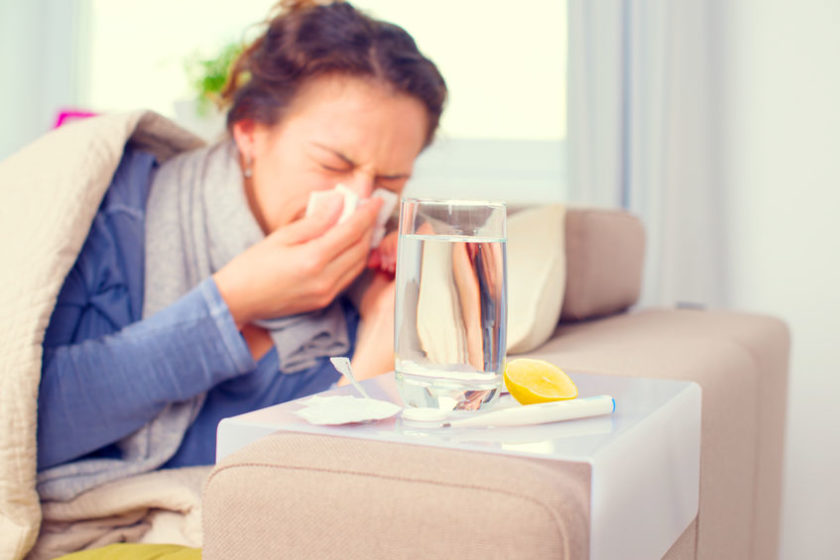American health officials are issuing stern warnings to be prepared for the possibility of a deadly flu season.
According to news reports, California and Louisiana have already experienced an uptick in influenza only a few weeks into the season. Some areas have seen triple the number of confirmed cases than this time last year. Several people have already died of flu-related complications; sadly, one death was a healthy child who had just returned home from overseas.
Now is the time for New Yorkers to protect their family from the flu, while most of the country is still seeing levels of “low” flu activity. Know the facts, know the symptoms, and take every precaution you can to reduce your chances of getting the flu and the onset of life-threatening side effects.
Flu Trends Across The U.S.
The final statistics on last season’s flu burdens are set to be released later this fall. But so far, the estimates are concerning.
The Center for Disease Control and Prevention (C.D.C.) estimates up to 42.9 million cases of influenza were confirmed in the United States from October 1, 2018, to May 4, 2019. Approximately 20.1 million patients were seen for flu symptoms, 647,000 were hospitalized, and more than 61,000 people died of flu-related complications.
Predictions for the upcoming 2019 to 2020 season are often made from examining the statistical trends from Australia’s flu season, which runs from June to September. In 2017, Australia experienced its worst flu epidemic in 20-years, resulting in 745 deaths, according to The New York Times. Tabloids across Europe nicknamed the virus the “killer Aussie flu,” which preceded the death of more than 79,000 Americans from a similar virus only a few months later.
So far, Australian health experts are reporting one of the worst flu seasons on record, possibly exceeding the devastating results of 2017. These are some of the key findings:
- There was an early onset of the virus than in previous seasons;
- 272,146 cases were confirmed by the end of the first week of September;
- 662 deaths have been reported to date; and
- Most patients diagnosed suffered from the H3N2, the same strain as the 2017 Australian and U.S. outbreak, and a strain of the flu that historically results in more hospitalizations.
These are only the statistics that were reported immediately following the end of Australia’s flu season. Health officials report it will take months to determine if this year was truly worse than 2017. But with the numbers already elevated, the United States should be on high alert.
Flu Trends In New York State
New York State has seen 187 cases of the flu to date this season, up from 121 at the same time last year. The New York State Flu Tracker breaks down the numbers by county in the following regions:
- New York City: 39
- Long Island: 14
- Metro: 16
- Central: 17
- Western: 11
- Capital District: 3
Reports show that the majority of patients diagnosed to date contracted Influenza Type A (61). The remainder of patients contracted Influenza Type B (37) or an unspecified strain (2). This pattern falls in line with Australia’s trends so far, as H3N2 is a form of Influenza Type A and was the predominant strain this season.
How To Stay Safe
Regardless of how bad this year’s flu season will be, the health recommendations for prevention remain the same. New Yorkers can significantly reduce their chances of getting the flu by taking action early to protect themselves from contracting and spreading this deadly virus.
The C.D.C. provides the following recommendations to help keep families safe:
Vaccinations
Getting a flu shot is your first fight against reducing life-threatening symptoms caused by the flu. Health experts encourage all individuals (6-months and older) to get the flu shot as soon as possible. Rare exceptions do apply, so ask your doctor before getting any vaccines this year to make sure it is safe.
Options this season include:
- Standard dose flu shots.
- High-dose shots for people 65 years and older.
- Shots made with adjuvant for people 65 years and older.
- Shots made with viruses grown in cell culture. No eggs are involved in the production of this vaccine.
- Shots made using a vaccine production technology (recombinant vaccine) that does not require the use of flu virus.
- Live attenuated influenza vaccine (LAIV). – A vaccine made with an attenuated live virus that is given by a nasal spray vaccine.
Not all flu shots are equal. Patients should consult with their doctor regarding which flu shot is best for their health.
Preventive Steps
Practice healthy habits to prevent the spread of the flu virus if someone in your family brings it home. These steps include:
- Avoiding contact with people who are sick;
- Staying home if you are sick;
- Covering your mouth and nose when sneezing or coughing;
- Washing your hands frequently;
- Not touching your mouth, nose, or eyes, where germs can most easily spread; and
- Cleaning, disinfecting and wiping down surfaces frequently to kill germs before they strike.
Treatment
Health experts advise contacting your health care provider before seeking medical treatment for the flu. If you have mild symptoms, you may not require treatment or anti-viral drugs. However, going to the doctor as soon as you think you have the flu could spread the virus to others in high-risk groups.
If you are in a high-risk group, or are very sick and are worried about your symptoms, you most likely will need medical treatment aside from rest at home. Still, call your doctor right away for the best advice on where to go and how to be treated safely.
Know The Signs
Monitor early signs of the flu to make sure you are staying on top of the virus. Common flu symptoms to watch for include:
- feeling feverish/chills
- cough
- sore throat
- runny or stuffy nose
- muscle or body aches
- headaches
- fatigue
For more guidance on what to do to prevent or treat the flu, visit the C.D.C.’s “Flu View” for useful tips, information, and updated reports on the flu across the country.

The Impact Of Marijuana Legalization
Would New York legalizing recreational marijuana increase road accidents? We took a look at the stats in our latest study.
View StudyThe Law Office of Siler & Ingber, LLP
Phone:
1.516.294.2666
Address:
301 Mineola Blvd. Mineola, NY 11501
Subscribe to our Newsletter
SubscribeThis is a unique website which will require a more modern browser to work!
Please upgrade today!

